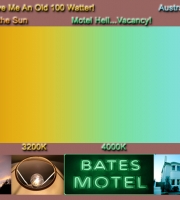
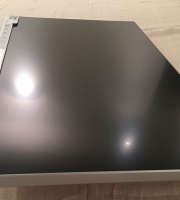
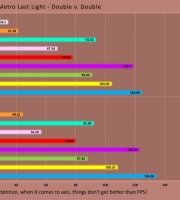
Weeks after AMD rolled out its R9 280X card (essentially a cheaper, faster HD 7970) a string of benchmarks leaked from a Korean website suggested that the performance of the company’s forthcoming flagship card might match or even surpass that of Nvidia’s imperious Titan. Though many could mount a convincing case against the Green Team’s wallet withering pricing policy, few would dispute that the Titan along with its lesser sibling, the GTX 780, significantly raised the bar in the battle for single GPU supremacy.
Excitement and speculation intensified when mere days after these mysterious benchmarks materialised, AMD’s product manager Devon Nekechuck bullishly asserted that the 290x would not only compete with the TItan but under certain conditions, even be able “ridicule” it. And so it was that on the 24th of October 2013 hoards of hardware enthusiast were treated to a club class flight from Thaiti to Hawaii. Though in this case the source of heat was not the sun’s brilliant rays and the sand was a just a little more refined than the sugar-white type encountered on the shores of the north and south pacific.
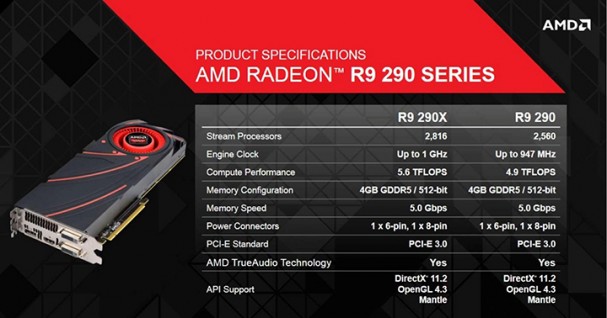
Having taken almost two years to mount a considered attack against Nvidia’s monstrously fast and super efficient GK110, the Hawaii GPU that beats at the centre of AMD’s creation includes several notable changes and innovations that have clearly been formulated to nullify its rival’s party pieces.
A 28nm chip with a comparatively conservative sized die of 438mm2 – 30% smaller than that of the GK110 – is enough to play host to an extra 2 billion transistors, over 800 additional stream processors, a double helping of ROPs and a generous side order of texture units.
Memory has also been increased to a total of 4gb (DDR5), some way off the Titan’s 6, but 1gb more than the similarly priced GTX 780 and most importantly, it has a super spacious 512bit bus on which to travel, a tantalizing prospect amidst the growing trend of ultra hi res gaming.
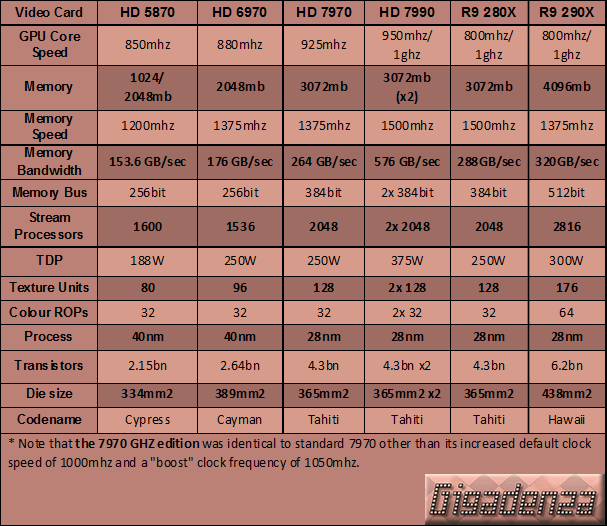
On the related subject, in an attempt to address performance hindrances when running multi-GPU configurations at their highest resolutions, AMD has consigned physical Crossfire bridges to annuls of history. Owing to the extra bandwidth made available by the latest incarnation of PCI express, all multi-card communication is instead facilitated via a DMA engine and occurs over motherboard’s PCI-E bus.
Finally Nvidia’s “GPU boost” feature, first introduced on the GTX 680 has been countered by a far more highly evolved form of AMD’s “Powertune” which, similarly, allows the card to attain optimum levels of performance within its thermal design limits by dynamically regulating voltages, though at far greater speed (10ms) and in considerably finer increments (255) than ever before. The system not only allows for more relaxed fan speeds and response times, thereby hopefully minimizing noise, but has also given AMD the confidence to set the cards temperature limit to an infernal 95 degrees, which despite more than a few singed eyebrows, they insist to be “perfectly safe”, though significantly, no guaranteed core frequency is specified.
Was all this a carefully thought out and refined design process, or had AMD simply gambled on the dedicated gamers’ tolerance for heat and noise in a desperate bid for “benchmark sprint” omnipotence. Cue the reviews.
Tom’s Hardware Guide
Anandtech
HardOCP
Techpowerup
PC Perspective
LegitReviews
Bit-tech
Bit-tech (an important follow-up feature addressing the card’s high operating temperature)
Guru3D